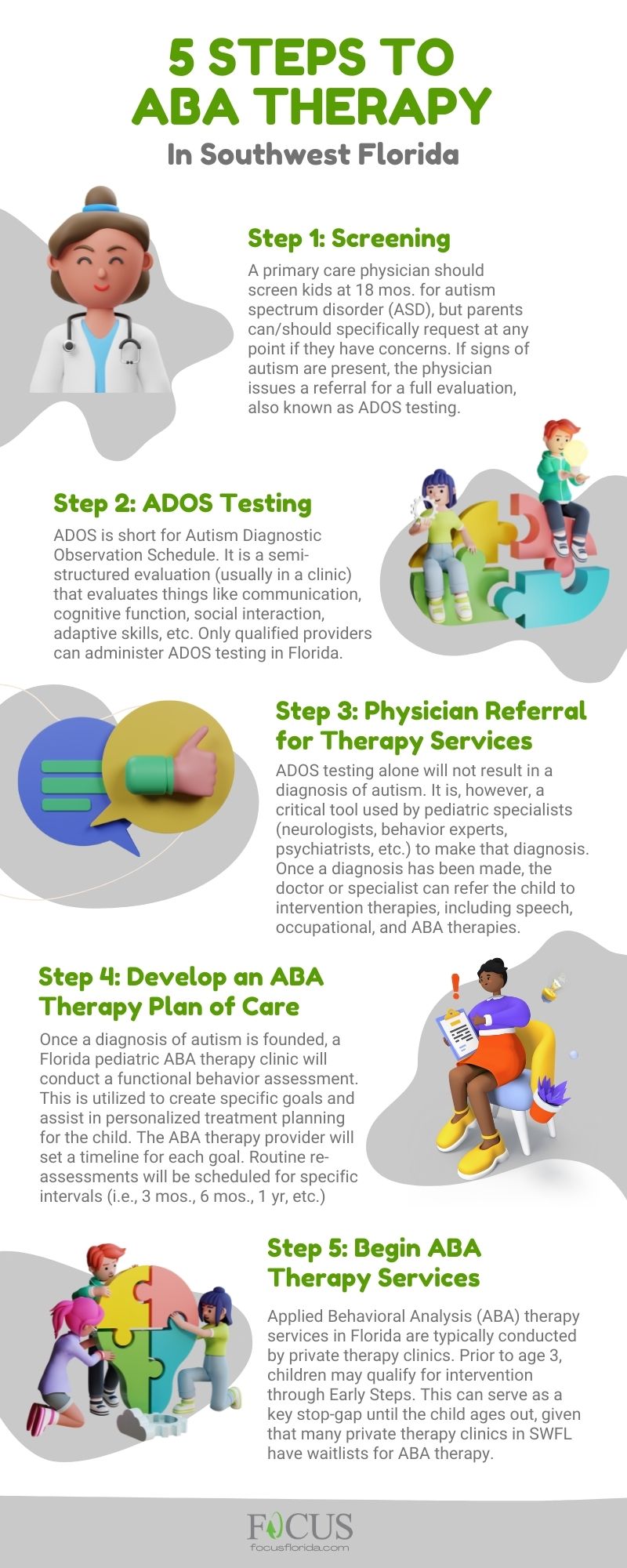A closer look at ABA Clinic and its specialized care team
Just How Behavior Therapy Can Transform Your Strategy to Emotional Obstacles
Behavior Therapy uses an organized structure for resolving emotional obstacles. It highlights visible habits, permitting individuals to recognize and change maladaptive patterns. By employing strategies such as cognitive restructuring and setting goal, this method fosters durability and psychological policy. Numerous have actually experienced considerable transformations via these methods. What stays to be checked out are the certain methods that can lead to lasting change in one's emotional landscape.
Comprehending Behavior Therapy: Trick Concepts and Principles
Behavior Therapy acts as a structured strategy to attending to psychological obstacles via the alteration of maladaptive actions. This restorative design is grounded in the principles of learning theory, highlighting that actions can be discovered and unlearned. It mainly focuses on visible habits instead than internal ideas or feelings, making it an action-oriented and useful technique. Key principles include reinforcement, where favorable actions are encouraged via rewards, and punishment, which prevents undesirable actions. Behavioral Therapy likewise uses methods such as exposure therapy, which progressively introduces clients to feared scenarios to decrease anxiety. Furthermore, it emphasizes the significance of establishing specific, measurable objectives to track progress. By actively engaging clients in their therapy, Behavior Treatment looks for to encourage people, equipping them with approaches to replace adverse actions with even more adaptive ones. This approach has been commonly utilized for various emotional obstacles, consisting of anxiety disorders, depression, and anxieties.
Determining Unhelpful Thought Patterns
Just how can people identify the thought patterns that add to their psychological challenges? The procedure frequently starts with self-reflection and mindfulness. People can pay close interest to their inner dialogue, especially throughout moments of tension or anxiety. Keeping an idea journal can be beneficial, enabling them to record their ideas and recognize repeating motifs or unfavorable patterns.
Typical purposeless idea patterns include all-or-nothing thinking, overgeneralization, and catastrophizing. By categorizing these ideas, people can recognize exactly how they affect their feelings. It is also important to evaluate the proof sustaining these thoughts, as many are based upon distortions instead than fact.
Participating in conversations with relied on buddies or therapists can offer extra insights, aiding people to familiarize their cognitive biases. Inevitably, acknowledging these unhelpful idea patterns is a vital action in resolving psychological difficulties and fostering healthier mental behaviors.
Practical Techniques for Handling Anxiousness and Anxiety
Many functional techniques can aid people take care of anxiousness and anxiety efficiently. Cognitive Behavior Therapy (CBT) highlights identifying and reframing adverse thought patterns, allowing people to test distortions and cultivate an even more well balanced viewpoint. Mindfulness practices, such as reflection and deep breathing exercises, allow individuals to secure themselves in the existing, lowering frustrating feelings related to anxiety. In addition, maintaining an organized daily routine can supply a sense of normalcy and control, which is often interrupted by these psychological difficulties. Participating in regular exercise is one more effective device, as workout launches endorphins that improve mood. Social support plays a vital function; connecting with buddies, family, or support system can ease feelings of seclusion. Journaling thoughts and feelings can also promote self-reflection and understanding. By incorporating these methods right into every day life, people can establish healthier coping mechanisms, inevitably bring about enhanced psychological wellness.
The Role of Objective Setup in Behavioral Therapy
In Behavioral Therapy, the establishment of clear goals plays an important duty in guiding individuals towards their wanted end results. Setting particular purposes permits reliable monitoring of progress, which can improve motivation and responsibility (ABA Therapist). This structured technique not just aids in taking care of emotional obstacles yet additionally promotes a sense of success as individuals work towards their objectives
Importance of Clear Goals

Tracking Progress Efficiently
Effective tracking of development in Behavior Treatment is very closely tied to the establishment of clear objectives. These objectives serve as criteria versus which customers can gauge their improvements. By specifying particular, quantifiable, attainable, appropriate, and time-bound (SMART) purposes, customers can get a tangible understanding of their development. Routinely examining these goals allows both the specialist and customer to assess progress, recognize barriers, and adjust techniques accordingly. This process promotes a feeling of responsibility and motivation, as customers witness their very own developments over time. Additionally, tracking progress with journals or progression graphes can enhance self-awareness, assisting clients acknowledge patterns in their psychological feedbacks. Eventually, reliable development tracking is essential to attaining enduring adjustment in Behavioral Therapy.
Structure Strength Via Behavioral Methods
How can people cultivate strength when faced with emotional difficulties? Structure durability needs the execution of efficient behavioral approaches that empower individuals to browse misfortune. Cognitive-behavioral methods, such as reframing negative ideas, make it possible for individuals to challenge harmful beliefs and change them with constructive perspectives. This shift cultivates a more adaptive response to stress factors.
Constant method of mindfulness can enhance emotional guideline, allowing individuals to stay based throughout stormy times. Participating in analytical exercises additionally gears up individuals with practical devices to deal with obstacles head-on, fostering a sense of control and skills
Social support plays a crucial function; urging open interaction and seeking link with others can buffer versus psychological distress. Furthermore, setting achievable goals advertises a sense of accomplishment, enhancing self-efficacy. By systematically utilizing these behavioral strategies, people can develop a resilient frame of mind, better geared up to face and conquer emotional difficulties.
Success Stories: Real-Life Transformations With Therapy
Building strength through behavior methods prepares for transformative journeys in treatment. Numerous individuals have actually experienced profound adjustments by engaging with Behavioral Therapy. As an example, Sarah, once overwhelmed by anxiety, discovered to identify and challenge her adverse idea patterns. With regular practice of exposure methods, she slowly re-engaged with social activities, ultimately finding happiness in previously intimidating scenarios.
Likewise, Mark battled with depression, really feeling entraped in a cycle of hopelessness. With the support of his specialist, he created dealing systems such as cognitive restructuring and mindfulness. With time, Mark reported raised inspiration and enhanced partnerships, noting a considerable shift in his overview on life.
These success tales highlight the power of Behavior Treatment in promoting psychological durability. By furnishing people with sensible tools and techniques, treatment not only addresses immediate obstacles however likewise equips clients to navigate future misfortunes with confidence.
Regularly Asked Concerns
The Length Of Time Does Behavior Modification Typically Require To Show Results?
Behavior Treatment other typically takes several weeks to months view to reveal recognizable results, depending upon private situations and the specific issues being attended to. Uniformity and active involvement in sessions substantially influence the efficiency and speed of progress.
Can Children Gain From Behavioral Treatment too?

Exist Any Type Of Side Impacts of Behavioral Therapy?
Behavior Treatment typically has very little negative effects, as it concentrates on changing behaviors as opposed to medicine. Individuals might experience temporary emotional pain or resistance to challenging difficult ideas and feelings throughout the procedure.
Just how Do I Select the Right Specialist for Me?

Choosing the appropriate specialist includes examining qualifications, specialties, and personal compatibility. Investigating credentials, reviewing evaluations, and organizing preliminary assessments can help people determine the most effective fit for their demands and psychological challenges.
Is Behavior Therapy Efficient for All Mental Health And Wellness Issues?
Behavioral Treatment is not universally effective for all mental health problems. While it benefits several problems, such as anxiety and clinical depression, some people might need alternate strategies or therapies customized to their particular needs and challenges.
Behavior treatment additionally utilizes techniques such as direct exposure treatment, which progressively introduces customers to been afraid scenarios to reduce stress and anxiety. By actively engaging clients in their treatment, behavioral therapy seeks to encourage people, equipping them with approaches to replace unfavorable habits with even more flexible ones. Cognitive Behavior Treatment (CBT) stresses identifying and reframing unfavorable thought patterns, making it possible for people to test distortions and grow an even more balanced point of view. In behavioral treatment, the establishment of clear objectives plays a necessary function in guiding people toward their wanted results. Behavior therapy typically takes several weeks to months to show noticeable results, depending on specific situations and the specific problems being attended to.